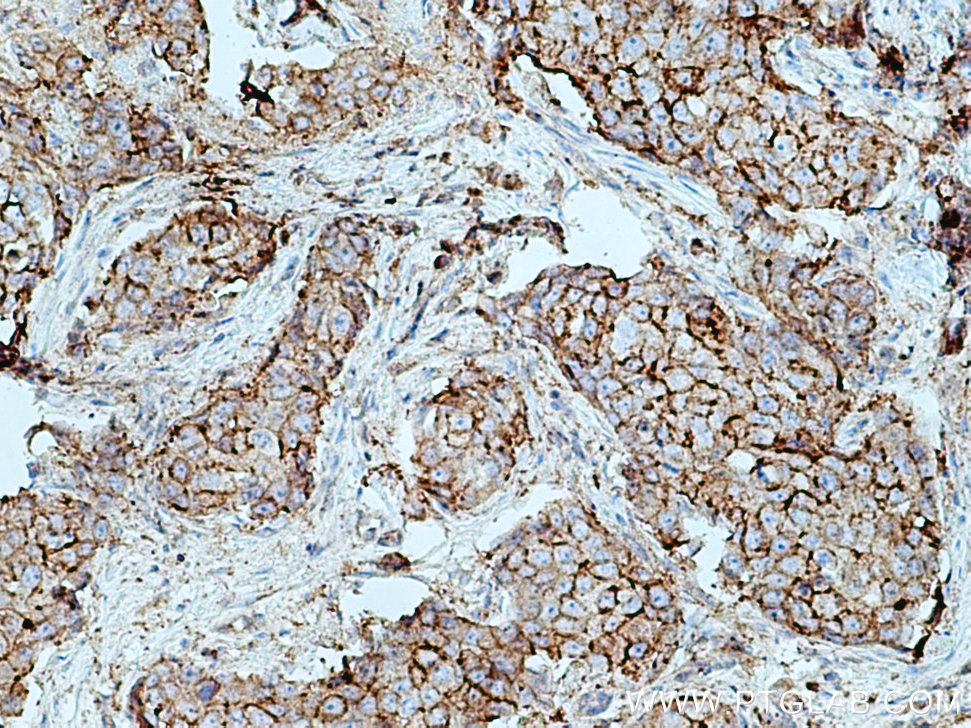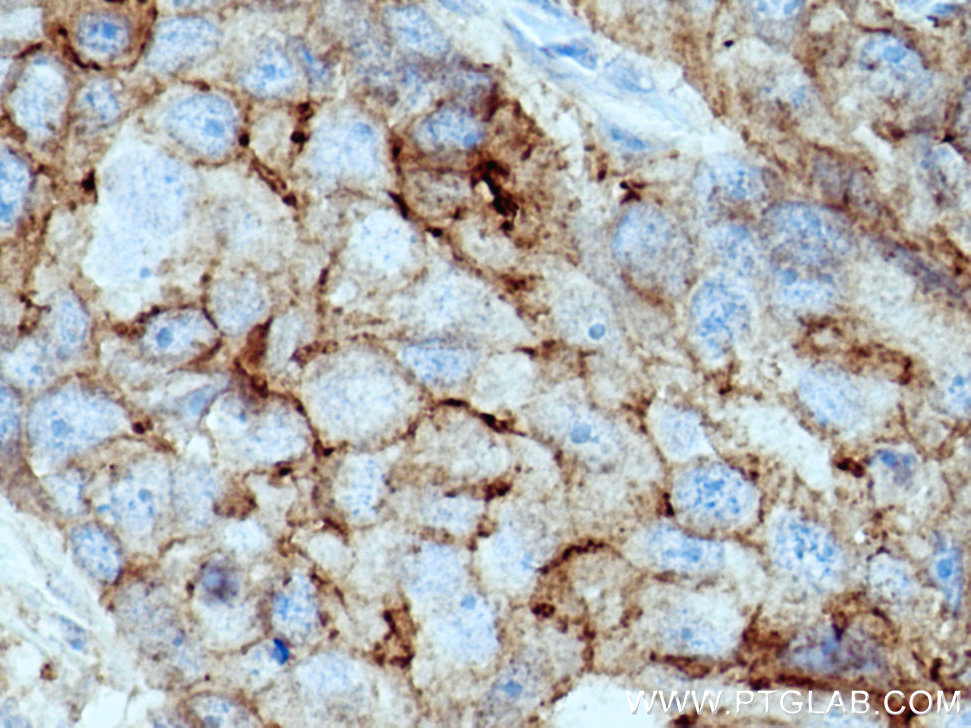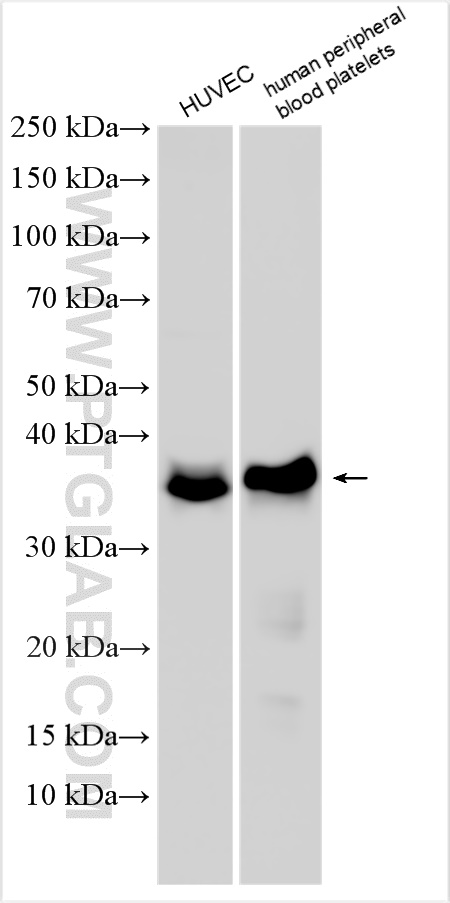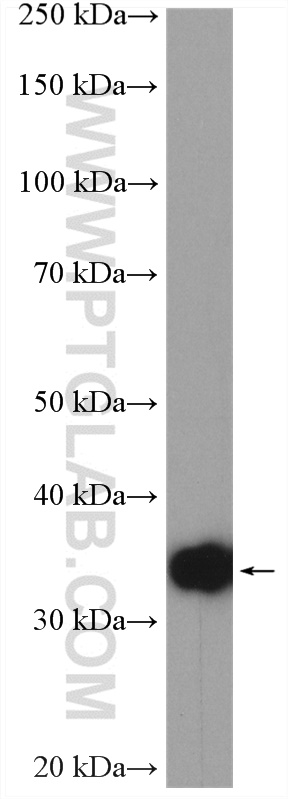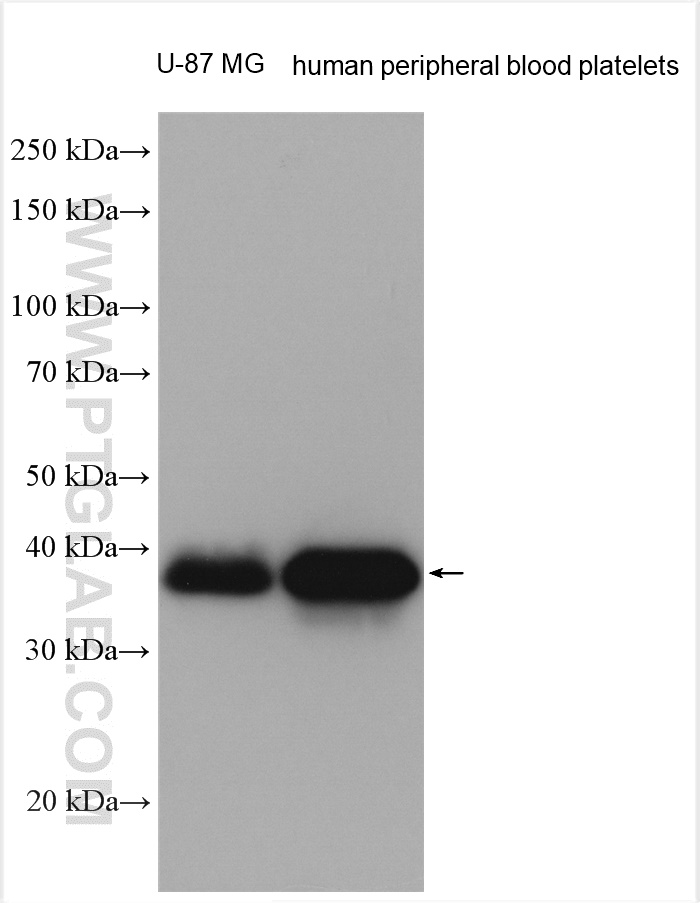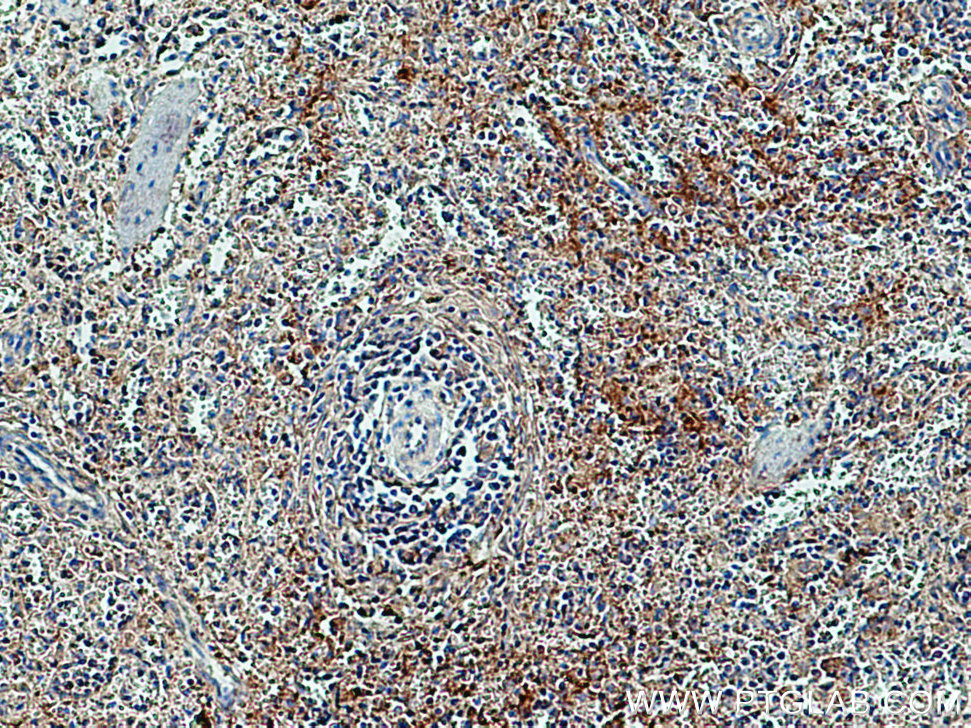验证数据展示
经过测试的应用
| Positive WB detected in | HUVEC cells, human peripheral blood platelets, U-87 MG cells |
| Positive IHC detected in | human breast cancer tissue, human spleen tissue Note: suggested antigen retrieval with TE buffer pH 9.0; (*) Alternatively, antigen retrieval may be performed with citrate buffer pH 6.0 |
推荐稀释比
| 应用 | 推荐稀释比 |
|---|---|
| Western Blot (WB) | WB : 1:1000-1:4000 |
| Immunohistochemistry (IHC) | IHC : 1:50-1:500 |
| It is recommended that this reagent should be titrated in each testing system to obtain optimal results. | |
| Sample-dependent, Check data in validation data gallery. | |
产品信息
26941-1-AP targets JAM-A/CD321 in WB, IHC, ELISA applications and shows reactivity with human samples.
| 经测试应用 | WB, IHC, ELISA Application Description |
| 经测试反应性 | human |
| 免疫原 | JAM-A/CD321 fusion protein Ag25641 种属同源性预测 |
| 宿主/亚型 | Rabbit / IgG |
| 抗体类别 | Polyclonal |
| 产品类型 | Antibody |
| 全称 | F11 receptor |
| 别名 | F11R, JAM-A/Junctional Adhesion Molecule A, JAM A, JAM 1, JAM |
| 计算分子量 | 33 kDa |
| 观测分子量 | 33 kDa |
| GenBank蛋白编号 | BC001533 |
| 基因名称 | F11R |
| Gene ID (NCBI) | 50848 |
| RRID | AB_2880692 |
| 偶联类型 | Unconjugated |
| 形式 | Liquid |
| 纯化方式 | Antigen affinity purification |
| UNIPROT ID | Q9Y624 |
| 储存缓冲液 | PBS with 0.02% sodium azide and 50% glycerol , pH 7.3 |
| 储存条件 | Store at -20°C. Stable for one year after shipment. Aliquoting is unnecessary for -20oC storage. |
背景介绍
The F11 receptor (F11R) was first identified in human platelets as a 32/35 kDa protein duplex that serves as the receptor for a functional antibody that activates platelets. It seems to play a role in epithelial tight junction formation. It was also reported to function as a receptor for reovirus and ligand for the integrin LFA1.
实验方案
| Product Specific Protocols | |
|---|---|
| WB protocol for JAM-A/CD321 antibody 26941-1-AP | Download protocol |
| IHC protocol for JAM-A/CD321 antibody 26941-1-AP | Download protocol |
| Standard Protocols | |
|---|---|
| Click here to view our Standard Protocols |
